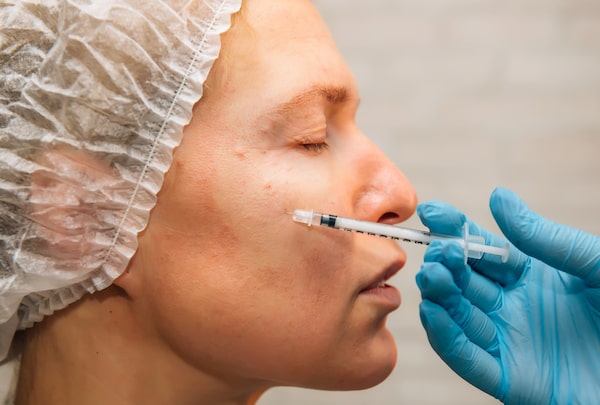A common issue for many people during their teenage years is acne (which is primarily a hormonal condition). Sensitivity to these male hormones, combined with bacteria and fatty acids within oil glands, can cause acne. Common sites for acne are the face, chest, shoulders, neck and backs they are all sites of oil glands. Acne can sometimes leave behind scars that can be corrected with fillers. One of the many treatments for acne scars is fillers that can be used on areas of the face including the cheeks, nose, lips and chin as well as around the mouth.
Fillers for Acne Scars Explained
- Dermal fillers are injected into the skin to raise depressed areas of acne scars or stimulate the natural production of collagen in the skin. Different options for fillers include the use of hyaluronic acid (Restylane and Juvederm), poly (methyl methacrylate) (PMMA) microspheres with collagen (Bellafill), poly-L-lactic acid (Sculptra) and autologous fat transfer that is fat transferred from your body into the acne scar.
- If the filler you have decided to take contains bovine collagen, you will have to take part in an in-office allergy test and share both your medical and allergy history to make sure you’re not allergic. In this test, collagen will be injected into your forearm and you will be monitored for any negative reactions. If you show no reaction to the test, you will be able to go ahead with your appointment. Your doctor will mark your face in order to know the exact spot to be injected. Each syringe of filler will contain the numbing agent lidocaine to make the procedure less painful. The procedure can take anywhere from 15 minutes to about an hour depending on the depth of the scar and the size of the treated area.
- Bellafill is dermal filler that is used to treat acne scarring. It is made of collagen which is used to add volume to the skin and small poly (methyl methacrylate) (PMMA) beads used to structurally support the skin. Keep in mind that you must be over the age of 21 to receive Bellafill and not have any allergies to bovine collagen. Bellafill is said to work on both men and women with a variety of skin types. Bellafill is considered long-lasting or permanent and is the only FDA-approved filler to treat acne scars.
- In some cases, hyaluronic acid fillers, like Juvederm or Restylane, may be used to treat acne scars. These fillers aim to improve the contour of the skin and reduce depressions in the skin caused by said acne scars. However, these fillers are considered temporary and you will need to have them injected every few months. Another type of filler, poly-L-lactic acid (Sculptra), is used as well. This substance is not like other fillers in that it won’t immediately plump your skin. Instead, it boosts the production of collagen to reduce the appearance of acne scars over a few months.
- An autologous fat transfer can be considered more in-depth or invasive in comparison to fillers as fat is pulled from your body to be injected into your acne scars. The final results depend on how much of the injected fat will develop a blood supply and survive.
Safety of Dermal Fillers for Acne Scars
All dermal fillers are generally considered to be safe even if it is necessary to perform skin testing for allergies prior to certain procedures such as the use of certain fillers with bovine collagen. Many of the newer fillers are made from sugar that is naturally found in the skin and the overall chances of them causing allergic reactions are rare.
There are still certain side effects that you need to be aware of including swelling, bruising, itching, redness and an allergic reaction to the lidocaine. Another risk is blood vessel occlusion which is when a blood vessel becomes blocked and can cause the skin to break down. It should be noted that this is rare for fillers used for acne scarring because they are typically placed in such a way where the risk of occluding a major vessel is unlikely.
The procedure is rather easy to perform so, after any fillers, you can resume most activities right away and you should be able to drive yourself home. Avoid strenuous activities and try not to itch or rub the injection site for a number of days after your treatment. Filler injections should only be performed in-office by a trained medical professional for safety and the optimum results. Be sure and consult with the medical professional before having fillers for acne scars to discuss any questions to concerns and to find out the type of results you can expect to see after the treatment. Once you and the medical professional are in agreement about the procedure, you can schedule your fillers treatment to address your acne scars.
– JM

